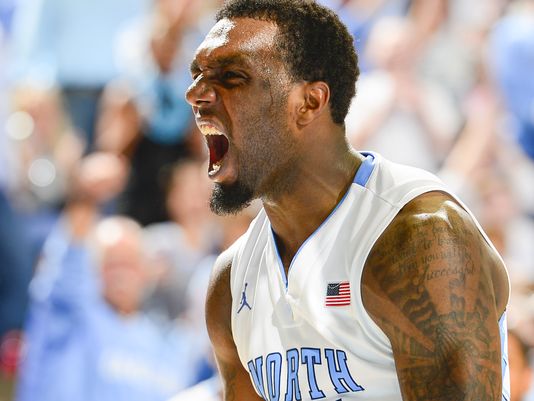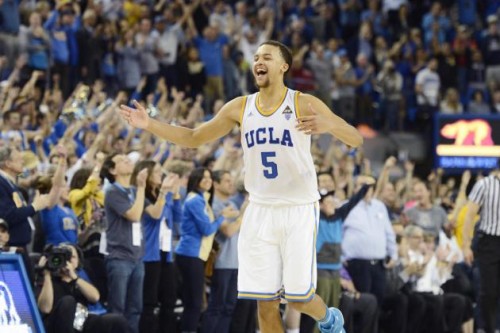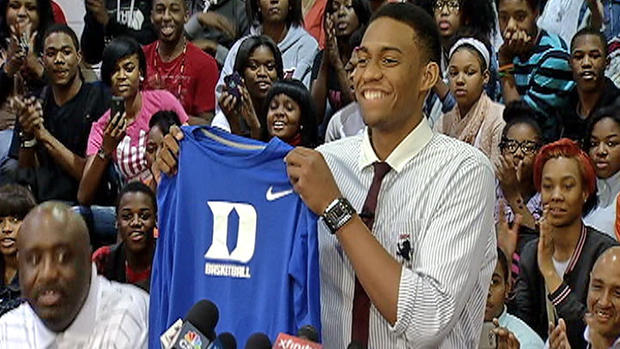Posted by Dan Lyons on October 21st, 2013

- New York Times writer Zach Schonbrun experienced a sense of relief among the various schools at last week’s Big East Media Day in Manhattan. After many seasons played under the shroud of conference realignment, culminating with the awkwardness of last season’s farewell tour for Syracuse, Pittsburgh, and Notre Dame, the Big East is now a settled, basketball-driven league focused on private schools in metropolitan markets. While the conference’s new members — Butler, Creighton, and Xavier — are all located in the Midwest, they fit into the league quite well culturally. St. John’s head coach Steve Lavin actually thinks the new schools fit in better than some of the public universities that have moved on to the American Athletic Conference, and the schools who left for the ACC for largely football-based reasons: “It’s not like a ‘Sesame Street’ deal — which one doesn’t belong… You’ve got a tree, a bush, some seaweed and then a truck. It just didn’t fit. I think now we have a league that’s more similar.”
- Georgetown lost an excellent player to the NBA Draft in standout forward Otto Porter, but guard Markel Starks thinks that the Hoyas are more than just one player and that his team will look to prove that this season: “We play as a unit… We play as a group. Obviously, we just lost a great player. Even still, with or without him, we play as a unit. … I think we can still be a very dangerous team.” Starks, now a senior, will probably bear much of the weight of Porter’s absence in the scoring column, after averaging 12.8 points per game last season. He will be joined in the backcourt by D’Vauntes Smith-Rivera, who proved capable of exploding for big point totals last season. Smith-Rivera scored at least 14 points in three of his last four regular season games last season, and dropped 33 in 34 minutes against DePaul on February 20.
- One of the major changes fans will notice in the conference this year is a lack of legendary coaches on the sidelines, although the Big East will not be hurting for talent in that spot. Gone are Hall of Famers like Jim Boeheim and Rick Pitino, but rising stars like Marquette’s Buzz Williams and Georgetown’s John Thompson III are poised to lead the conference into this new era. Thompson agrees that the coaching talent in the league is very high: “If you look around the room, the quality of coaching is outstanding. Yes, we lost some Hall of Fame coaches, but I don’t think too many teams want to go up against the guys in this room. Every game is going to be a battle. That was true last year; that’s going to be true this year.” Williams also believes in the overall quality of the league, and thinks it stands up with the best conferences in college basketball: “Every coach is going to say they play in the best league, but if you objectively study the numbers, I think what this league has done the last five years speaks for itself. I think this year that will hold firm, too.”
- Even without the likes of Syracuse, Louisville, and UConn, many are excited about the prospects of the Big East, especially those at the league’s three new schools: Butler, Creighton, and Xavier. Between the television contract with Fox Sports 1 and the ability to play at Madison Square Garden, the Big East provides a great increase in exposure for the former Horizon League, Missouri Valley Conference, and Atlantic 10 teams. Rumble in the Garden‘s Chris Ronca caught up with Xavier’s Chris Mack and Creighton’s Greg McDermott, who were both very excited about these new possibilities. Mack says his players are excited about playing at MSG: “Playing for your conference championship in the Mecca is an amazing opportunity for Xavier fans and players.” McDermott talked about the league’s TV contract and it’s impact on the Creighton program: “[Creighton’s] fans have longed for this for awhile.” McDermott went on to say that “with Fox [Sports] 1, it’s very exciting for the program… there’ll be a lot of new ideas with how [Creighton’s] product is shown nationally.”
- Sports Illustrated‘s [and RTC‘s] Chris Johnson’s “Stock Watch” series sets its gaze on the Big East, and he’s quite bullish on Villanova, while throwing a bit of shade on Butler. Johnson cites Villanova’s surge in the middle of last season, where the Wildcats knocked off top five Louisville and Syracuse outfits in a a five-day stretch, as evidence that Jay Wright’s club is very dangerous. He likes the combination of Ryan Arcidiacono, JayVaughn Pinkston, and Daniel Ochefu, and believes that if the team continues to get to the free throw line and play stingy defense, it can push for the top of the league standings. As for Butler, Johnson believes that the loss of Brad Stevens in conjunction with an increase in the difficulty of conference play will hurt the Bulldogs, as will the departures of Rotnei Clark and Andrew Smith as well as the injury to Roosevelt Jones.
| big east, microsites, morning 5
| Tagged: acc, andrew smith, atlantic 10, big east, big east media day, brad stevens, butler, buzz williams, chris mack, creighton, d'vauntes smith-rivera, Daniel Ochefu, depaul, Fox Sports 1, georgetown, greg mcdermott, horizon league, jay wright, Jayvaughn Pinkston, jim boeheim, john thompson III, louisville, markel starks, missouri valley conference, msg, nba draft, notre dame, otto porter, pittsburgh, rick pitino, roosevelt jones, rotnei clark, ryan arcidiacono, st johns, steve lavin, syracuse, uconn, villanova, xavier
Share this story

















































